This post is also available in:
 Deutsch
Deutsch
Swiss companies have been exporting vaccines for a long time. There was a final peak in 2001, when fear of bioterrorist attacks suddenly brought the smallpox vaccine Lancy Vaxina back into demand.
After the attack on the World Trade Center on 11 September 2001, the Swiss company Berna Biotech experienced a sudden increase of demand for its long established smallpox vaccine Lancy Vaxina. Various European countries bought large batches to protect their population in case of an emergency. The Swiss government also bought 3 million doses dry vaccine. Fortunately, Berna Biotech was able to fall back on stockpiled vaccines. Since smallpox was officially declared eradicated by the WHO in 1980, the demand had fallen sharply.
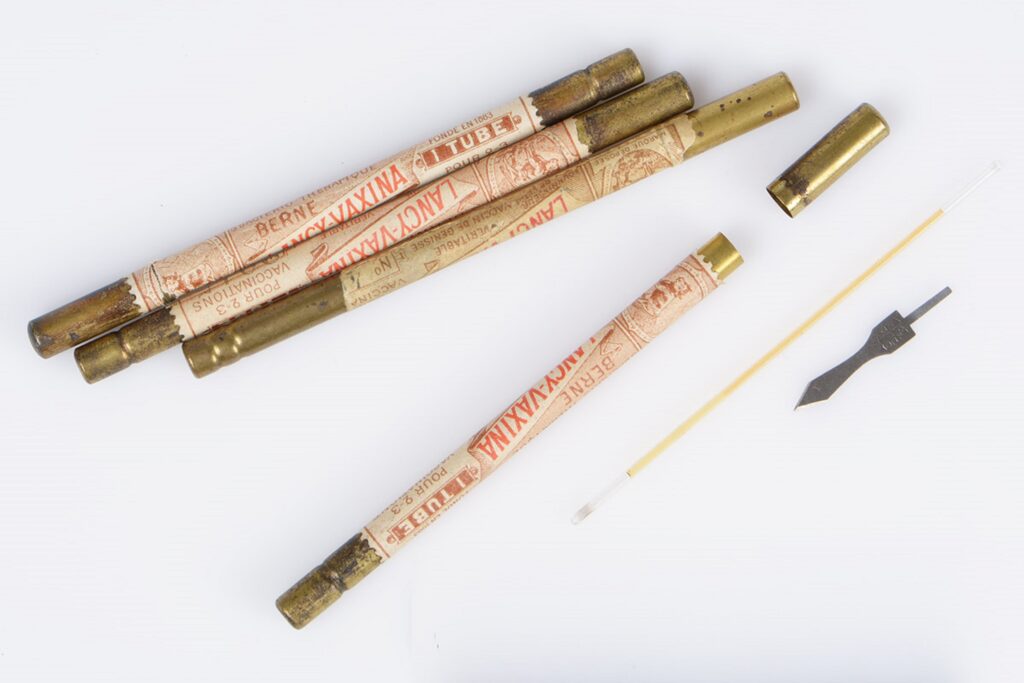
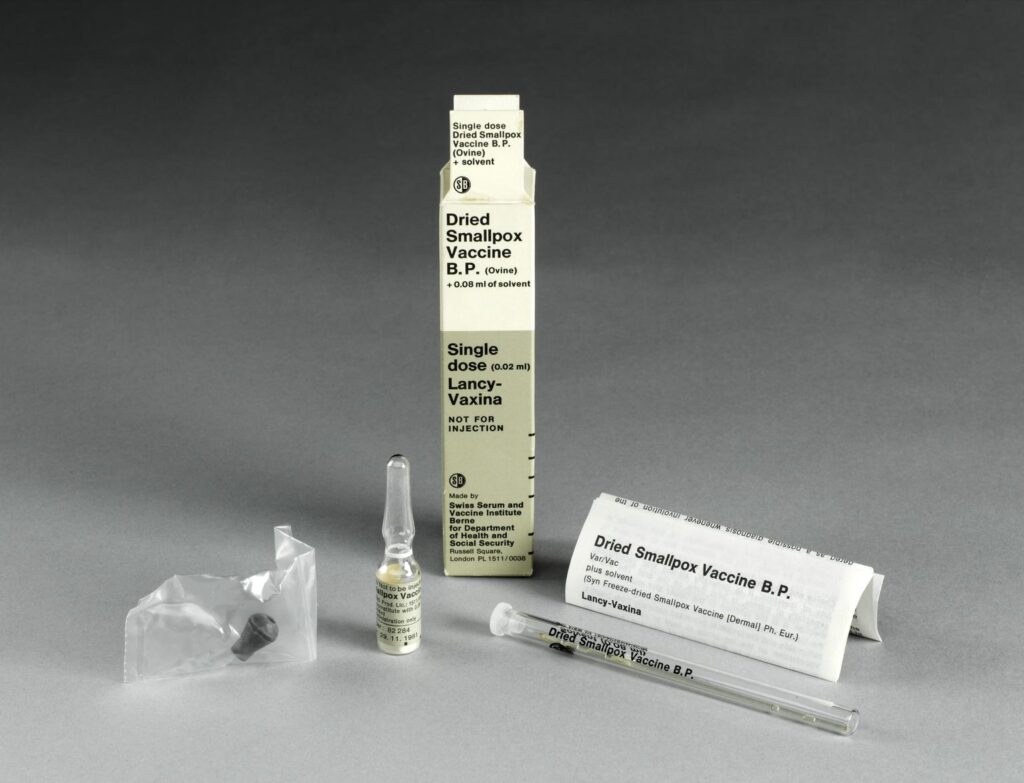
Swiss Serum and Vaccination Institute in Berne
The Lancy Vaxina vaccine has an astonishingly long history. As early as 1883, the entrepreneur Charles Haccius founded the first Swiss company for the industrial production of smallpox vaccine, the Institut Vaccinal Suisse, in Lancy near Geneva. The institute produced “animal vaccine”. This means that the smallpox vaccine was not – as was previously the norm – obtained from the blister of a vaccinated child, but vaccine material was grown on the skin of cattle.
Shortly after its foundation, the company was also active internationally. In 1883, the vaccine was already exported to Lesotho, then Basutoland. In 1898, the Institut Vaccinal Suisse merged with the Bernese company Häfliger, Vogt & Co, which produced diphtheria vaccines. Together they founded the Swiss Serum and Vaccination Institute. For vaccine production, the company rented an annex to the Institute for Hygiene and Bacteriology at the University of Bern. In 1910, the company exported its products to Italy, Russia, Germany, the USA and the Belgian Congo. While liquid vaccine was preferred in Europe, dry vaccine was used in the tropics for climatic reasons.
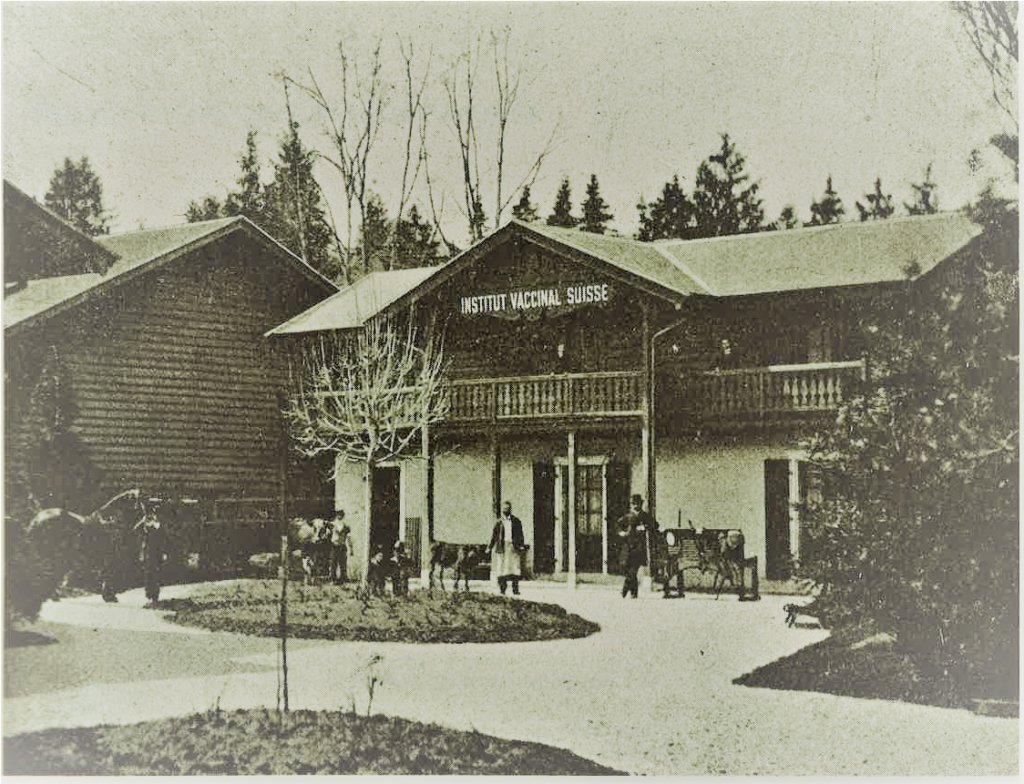
Serial vaccine production on cows
The Swiss Serum and Vaccine Institute continuously purchased young cattle, which was held in barns on the Institute’s premises. For vaccine production, the calves’ belly was cleared of animal hair, cleaned and disinfected. The animals were fixed on a vaccination table lying sideways so that the vaccination field was easily accessible. With a lancet, regular lines were scratched on the animals’ skin and the vaccine inserted. Finally, the site was covered and the animal brought back to the barn for monitoring.
After 5-6 days, the vaccination pustules were fully developed and filled with a yellowish, sticky serum. The pustule contents were scraped out with a spoon and mixed with glycerin. This mixture was triturated into an emulsion in the Institute’s laboratories and filled into sterile glass tubes. Before the vaccine was released, it was examined bacteriologically and tested in animal experiments on rabbits and guinea pigs. Calves used for vaccine production were slaughtered and examined for diseases such as bovine tuberculosis.
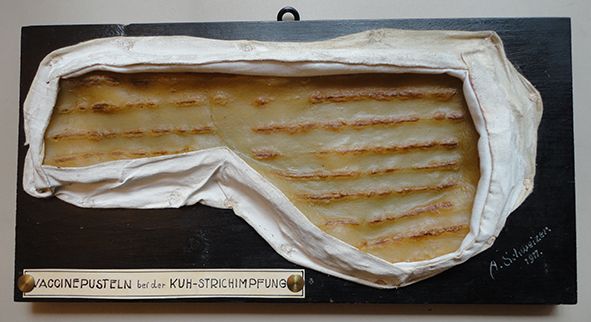
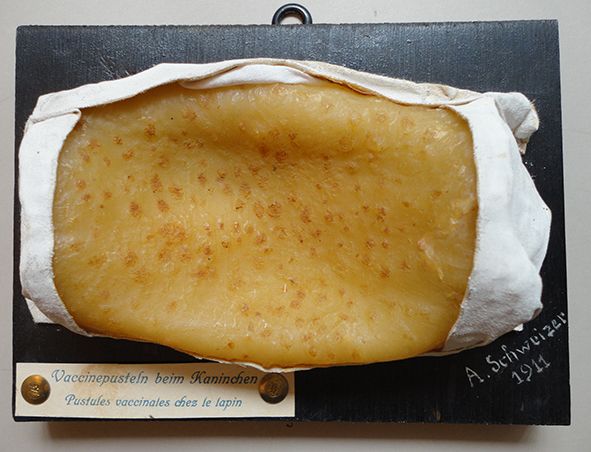
During the last Swiss smallpox epidemic of 1921-1926, the Lancy Vaxina vaccine was used extensively. In 1923, the Federal Council enacted a compulsory vaccination programme for affected localities and population groups. Those who had not yet been vaccinated received an emergency vaccination. Another Swiss animal vaccine used was produced in Lausanne. In 1898, Emil Felix and Jules Flück founded the Institut Vacciogène Suisse, which also remained an important supplier for decades. In contrast to Germany, where state institutes ensured the supply of vaccine, private companies carried out production in Switzerland.
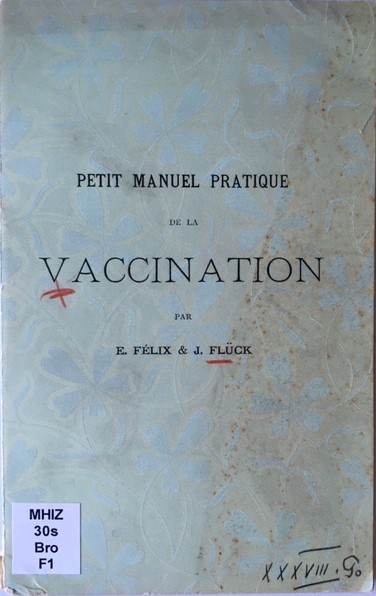
In later years, smallpox occurred only sporadically in Switzerland. The last case of the disease was reported in 1963. Vaccinations were discontinued in the 1970s. Today, the Swiss government still hoards the Lancy Vaccina doses purchased in 2001 for emergencies. The pioneering company Berna Biotech however was sold in 2006 and now belongs to Johnson & Johnson.
